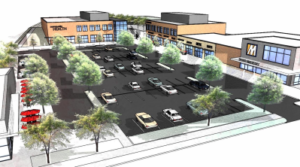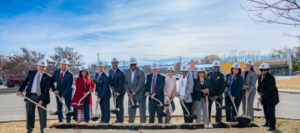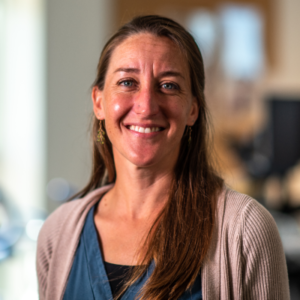Invest Health in Practice: Community Development Timeline and Lessons Learned
In 2016, Reinvestment Fund, with support from the Robert Wood Johnson Foundation, launched Invest Health to advance equity-focused systems change in small to midsized cities using investment capital as a catalyst.
Over three years, fifty city teams convened to learn from experts in food access, housing, data strategies, community development finance, public safety, racial equity, and community organizing, and received technical assistance and $60,000 in initial grant resources in pursuit of two objectives: (1) to define our community’s health challenges using data, and (2) develop a pipeline of fundable community development projects aimed at fostering healthier, more equitable neighborhoods. Guided by six program principles, city teams leveraged cross-sector partners to engage citizens authentically and position data as a driver for channeling capital into neighborhoods to develop systems-focused strategies aimed at promoting equity and addressing social determinants of health.
Through the early stages of Invest Health, our city team (led by the Center for Community Health Innovation at Roanoke College and including the City of Roanoke, Freedom First Credit Union, local food-systems experts, and a stakeholder collaborative supporting our healthcare system’s strategic plan) committed to concentrate our efforts in Roanoke’s “HUD Target Area” – the Melrose-Orange neighborhood of northwest Roanoke. Target area designation ensures the majority of Roanoke’s Community Development Block Grant (CDBG) and US Department of Housing and Urban Development HOME Investment Partnership Grant Program funds are allocated to a single neighborhood for five years, providing access to government finance dollars and encouraging collaboration to maximize cross-sector resource sharing.
 Rendering of the completed Melrose Plaza, to be opened in 2024. |
With potential to leverage capital and engage diverse cross-sector partners, our Invest Health work began with a data dive to understand resident lived experiences as reported through a decade of neighborhood transformation plans, community health assessments, Choice Neighborhood planning studies, and boots-on-the-ground information gathering. The consistency of need echoed across datasets was astounding – Melrose-Orange residents needed access to healthy, affordable food and, in response, our team sought to address this challenge with a full-service grocery store.
The narrative that follows outlines the timeline and benchmarks that led us to establishing the Market on Melrose, including important lessons learned along the way:
Lesson 1: Data is a Driver, Not an Investment Incentive
Community input data gleaned from Melrose-Orange residents provided a launching pad for grocery predevelopment activities. In our first Invest Health year, we leveraged data to secure $55,000 in CDBG funds to complete a market study and real estate plan, secure 30,000 sq-ft of retail space in the neighborhood’s most viable development site, and establish relationships with Merchants Distributors Incorporated (MDI) – the largest wholesaler for independent grocery operators on the east coast.
Through our second year of Invest Health, we chased development leads, leaning heavily on our national cohort for support and technical assistance to understand best-practice models in grocery development. Despite a clear, data-informed development plan, we were unable to secure investment capital, backing ourselves into the “chicken and egg” paradox of grocery predevelopment.
To secure a grocery operator, a real estate developer is needed; to secure a developer, a grocery operator must be in place. With an expected annual profit margin below 2%, grocery development is a hard sell, particularly in neighborhoods confronting generations of racially-motivated disinvestment. Despite a viable market study and significant resident and cross-sector support, by December, 2017, all benchmarks of progress slipped through our fingers like a wet noodle.
Lesson 2: The Undeniable Reality of Cross-Sector Partners and the Critical Role of a Dependable Anchor
By the beginning of our third year of Invest Health, team partners began to reorient their focus toward organization-level priorities, demonstrating a very real and potentially debilitating challenge in collaborative cross-sector work.
When times are good, cross-sector partnerships demonstrate considerable value-add to efforts promoting community health equity. When collective resources and expertise in city government, academe, and the private and non-profit sectors are aligned in pursuit of a unified goal, progress moves quickly (as evidenced by our first Invest Health year).
But in addition to collaborative goals shared by partners – which supersede organization-level priorities – as employees, individuals are beholden to the goals of their home institution. In the absence of tangible development benchmarks, partner energies reoriented toward their home institutions, necessitating a strategic shift by our anchor institution to garner new modes of technical assistance to maintain progress.
Lesson 3: Policy (and National Partners) Fortify Investment Strategies
Included among the benefits of being an Invest Health city is access to the professional networks of Reinvestment Fund and the Robert Wood Johnson Foundation. In early 2018, Roanoke was recruited into a cohort initiative positioning policy and legal strategies as tools to advance community health equity.
Approached due to the Center for Community Health Innovation’s unique datasets and the close working relationships between city government, academe, and local CDFI’s, we worked extensively with policy experts at ChangeLab Solutions to position health equity at the center of the city’s strategic vision for the future, CityPlan 2040.
By successfully infusing health and equity as interwoven policy themes in our comprehensive plan, access to affordable, healthy food became a community priority that could be supported by government finance dollars. We also learned to use public deliberation as a mechanism to authentically engage citizens in government finance decision-making, establishing precedent for future equity-focused community development projects.
As a result, nearly two years after our Invest Health efforts had slipped through our fingers, we had built a foundation of equity in policy and practice to reignite our work to bring needed resources to the Melrose-Orange neighborhood.
Lesson 4: When Tools are Provided, Citizens Manifest Change
Through 2020 and 2021, the Center for Community Health Innovation provided organizational capacity to guide residents through visioning sessions for a new feasibility study and business plan.
Supported by a Healthy Food Financing Initiative technical assistance grant, we leaned heavily on resident social networks to build a vision for the Melrose-Orange neighborhood, developing a “success launching pad” inclusive of trusting personal relationships, resident informed site-renderings, and a real estate plan that uncovered the expense budget of a regionally-branded grocer operating in a neighborhood of similar economic context.
By the fall of 2021, when federal CARES and American Recovery Plan Act funds were announced, we were equipped with food access policies, an illustration of the neighborhood’s vision of success, and a financial roadmap to a viable neighborhood resource hub.
Residents of the Melrose-Orange neighborhood presented our model to the Star City Strong COVID-response taskforce, demonstrating alignment with the city’s guidelines for allocating ARPA funds, including:
- The ability to address known disparities and promote equity;
- The capacity to leverage alternative funds;
- The potential for transformational change.
Securing $10.5 million in ARPA seed funding, we incited Goodwill Industries of the Valleys to commit to serving as project developer and grocery store operator, leaning into their retail expertise and organizational mission of “eliminating poverty by empowering individuals to achieve their greatest potential” in new ways, and committing to bring Melrose Plaza to life.
The Efficacy of Invest Health’s Core Principles
As we make progress toward the grand opening of Melrose Plaza in December 2024 and look back on the nonlinear (noodle-like) journey that led us here, the efficacy of Invest Health’s core vision and principals are undeniably clear.
By positioning data as a catalyst for change, engaging with communities authentically, and leveraging the collective resources of trusted and engaged cross-sector partners toward a common vision, midsized cities are well-positioned to implement the policy, systems, and environmental change strategies necessary to address social determinants of health.
How those elements culminate to fulfill a community’s vision of success is messy and likely different in every community, but if the journey resembles a plate of spaghetti noodles, you might be on the right track.



 Dr. Liz Ackley is the Founding Director of the Center for Community Health Innovation and a Professor of Health and Exercise Science at Roanoke College. An exercise physiologist by training, Liz advances the role of exercise as medicine while translating her expertise in systems-level thinking in broad community contexts. In addition to being a passionate educator, Liz serves as the Director of the Roanoke Valley Community Healthy Living Index – a citywide health surveillance system conducted to explore complex relationships between resident health outcomes and neighborhood-level infrastructure supporting healthy living. Liz enjoys leveraging data as a catalyst for equity-focused policy initiatives and community development strategies, and has generated >$14 million in grant funds and technical assistance while leading multiple cross-sector initiatives to advance city-level goals. Liz has been recognized for excellence in community leadership and teaching, including the 2022 Outstanding Faculty Award from the State Council of Higher Education of Virginia.
Dr. Liz Ackley is the Founding Director of the Center for Community Health Innovation and a Professor of Health and Exercise Science at Roanoke College. An exercise physiologist by training, Liz advances the role of exercise as medicine while translating her expertise in systems-level thinking in broad community contexts. In addition to being a passionate educator, Liz serves as the Director of the Roanoke Valley Community Healthy Living Index – a citywide health surveillance system conducted to explore complex relationships between resident health outcomes and neighborhood-level infrastructure supporting healthy living. Liz enjoys leveraging data as a catalyst for equity-focused policy initiatives and community development strategies, and has generated >$14 million in grant funds and technical assistance while leading multiple cross-sector initiatives to advance city-level goals. Liz has been recognized for excellence in community leadership and teaching, including the 2022 Outstanding Faculty Award from the State Council of Higher Education of Virginia.